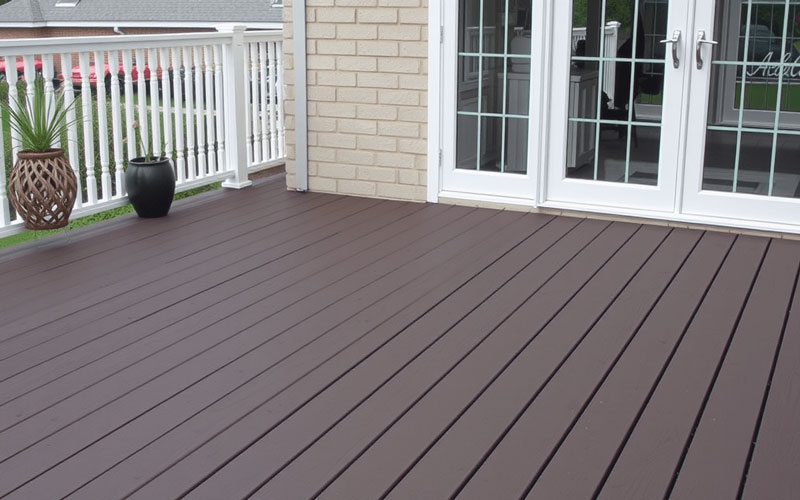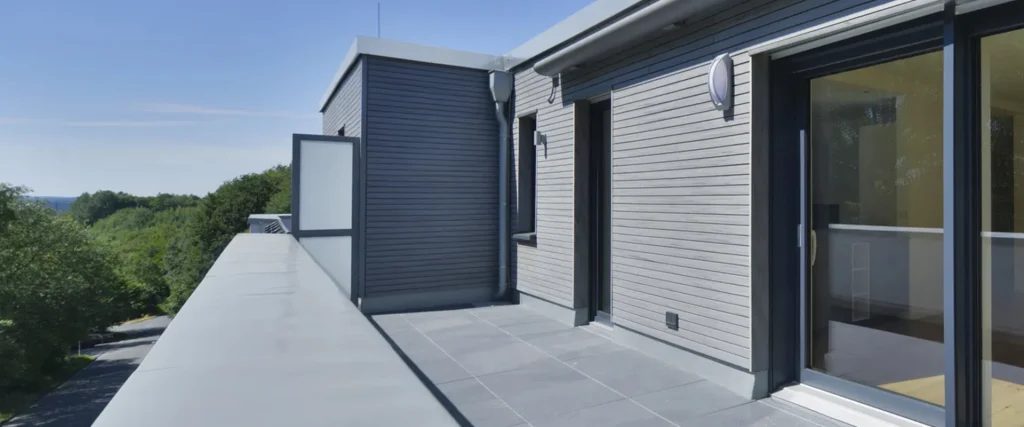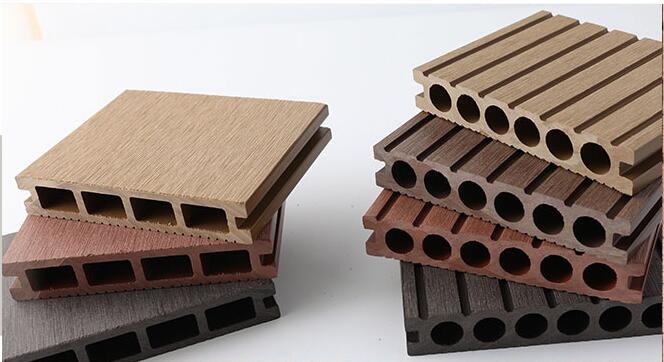Composite decking board in UK has become one of the most desirable choices for homeowners, landscapers, and builders who want outdoor spaces that deliver both beauty and performance. From garden patios to large commercial terraces, people across the country are shifting from traditional timber to long-lasting, low-maintenance composite decking boards UK brands and suppliers are offering today. This shift is not driven by trend alone—rather, it’s the result of practical needs such as durability, weather resistance, sustainability, long-term appearance, and ease of installation.
Table of Contents
The UK market is unique because of its weather patterns, architectural styles, and consumer preferences. A decking system must withstand months of rain, rapid temperature changes, frost, UV exposure, and occasional heatwaves. This article explores the essential considerations, applications, advantages, and cost expectations for anyone choosing composite decking board in UK—whether for a small garden makeover or a full outdoor living upgrade.
Why Composite Decking Board in UK Has Become a Homeowner Favourite
Choosing composite decking board in UK is not only about upgrading a garden—it’s about creating a long-lasting, functional outdoor area that stays beautiful with minimal effort.
1.1 Built to Withstand the UK Climate
The UK’s constant moisture, rainy seasons, and winter frost cause traditional timber to warp, crack, rot, or splinter. Composite decking boards UK homeowners prefer are engineered using weather-resistant materials that:
Maintain structural stability in wet conditions
Resist swelling or warping during winter freeze-thaw cycles
Reduce surface fading caused by UV exposure
Prevent mould and algae growth better than timber
This makes them ideal for coastal regions, shaded gardens, and high-traffic areas.
1.2 Consistent Appearance Over the Years
While wood requires annual sanding, staining, or oiling, composite decking board in UK retains its colour and finish with minimal surface changes. For homeowners who want a deck that looks good year after year, composite decking offers a significant advantage.
1.3 Lower Maintenance = Lower Long-Term Cost
No painting. No oiling. No sealing.
A simple wash is usually enough.
This long-term reduction in labour and cost is one major reason composite decking boards UK suppliers have seen continuous market growth.

Popular Styles, Colours, and Finishes for Composite Decking Board in UK
The UK market cares deeply about appearance, home exterior matching, and architectural consistency. Composite decking boards are available in a wide range of styles that make it easy to complement classic, modern, or rustic homes.
2.1 Woodgrain vs. Sanded vs. Brushed Surfaces
Deep Woodgrain: ideal for customers who want a natural look similar to hardwood decks
Sanded Texture: a more subtle aesthetic for contemporary designs
Brushed or Matte Finish: reduces glare and creates a soft, refined surface
The choice often depends on whether the user prefers a natural timber feel or a modern minimalist style.
2.2 Most Popular Colours in the UK
Homeowners typically choose colours that blend with British landscapes and architectural tones.
Top-selling colours include:
Slate grey
Ash grey
Charcoal
Walnut brown
Teak
Natural oak
Coffee
Dark cedar
Grey tones, in particular, remain the leading trend—making many buyers search specifically for grey composite decking boards UK.
2.3 Hollow vs. Solid Composite Decking Board in UK
Both hollow and solid boards have their purposes.
Solid Boards
Stronger for high-traffic or commercial areas
Heavier and more stable
Excellent for steps and edges
Hollow Boards
Lightweight
Cost-friendly
Good for residential gardens
Provide excellent drainage
Choosing between them depends on the project load, budget, and design needs.

Key Considerations When Choosing Composite Decking Board in UK
Understanding the critical factors helps homeowners make the best long-term choice.
3.1 Weather Resistance and Slip Rating
A decking board in the UK must be slip-resistant, especially during rainy or frosty days. Look for:
R11 or higher slip-resistance
Deep grooves or textured surfaces
Water-draining designs
Good drainage is essential for safety and longevity.
3.2 Colour Stability
The UK market prefers boards with superior UV stability. While minor fading is normal in the first few months, high-quality boards will maintain colour afterwards.
3.3 Load-bearing Performance
Patios, balconies, and garden walkways require boards that can withstand:
Garden furniture
Heavy foot traffic
BBQ stations
Hot tubs (in some cases, reinforced substructure required)
Choose solid boards or reinforced subframes for higher load areas.
3.4 Fire Rating
Some regions require Class B fire-rated decking, especially:
Rooftop terraces
Multi-unit residential buildings
Commercial projects
High-quality composite decking board in UK often includes fire-test certifications.
Installation Tips and Best Practices for Composite Decking Board in UK
Professionally installed decking lasts longer, but DIY installation is also popular.
4.1 Prepare a Stable Subframe
The subframe influences long-term performance more than the boards themselves.
Common materials include:
Pressure-treated timber
Aluminium
Composite joists
For wet areas or low-ground installations, aluminium is often recommended due to superior moisture resistance.
4.2 Correct Spacing and Ventilation
Composite decking needs small expansion gaps to handle temperature changes.
Key points:
3–8 mm between boards
10–15 mm at the edges (against walls)
Adequate ventilation under the deck for airflow
Without proper spacing, boards may deform over time.
4.3 Clip-based Installation
Most composite decking boards UK suppliers provide hidden clip systems:
Cleaner appearance
No exposed screws
Adjustable and easy to replace individual boards
Better drainage
Stainless-steel or reinforced clips are recommended for long-term reliability.
4.4 Attention to Trim, Edging, and Steps
To complete the deck:
Fascia boards
Corner trims
Step-nosing pieces
These provide a polished finish and protect board edges from chipping.

Common Applications of Composite Decking Board in UK Homes and Commercial Spaces
Composite decking fits various landscaping and architectural projects.
5.1 Residential Uses
Garden Patios
The most popular use—easy to install, weatherproof, and visually appealing.
Balconies
Lightweight boards (especially hollow) reduce load stress on balcony structures.
Poolside Decking
Slip-resistant surfaces make composite an ideal choice near water.
Hot Tub Platforms
With proper subframe reinforcement, composite boards provide a stable base.
Garden Pathways
Narrow boards and frame structures create stylish walkways for landscaped gardens.
5.2 Commercial Uses
Outdoor Restaurants
Durable surfaces that handle spillage, heavy traffic, and furniture.
Holiday Parks and Lodges
Low-maintenance decking saves time and cost for resort managers.
Public Walkways
Slip resistance and weather tolerance make composite a safe option.
Rooftop Terraces
Fire-rated boards create safer, long-lasting rooftop social areas.

Pricing Guide for Composite Decking Board in UK
Prices vary based on brand, board type, surface texture, and warranty level.
6.1 Typical Price Ranges
| Board Type | Price Per Linear Meter | Price Per Square Meter (Approx.) |
|---|---|---|
| Hollow Composite Boards | £2.50–£6.50 | £35–£75/m² |
| Solid Composite Boards | £5.50–£12.00 | £65–£120/m² |
| Capped Premium Boards | £8.00–£16.00 | £85–£150/m² |
Installation costs range from £35–£80/m², depending on complexity.
6.2 What Influences Pricing?
Thickness and density
Capped vs. uncapped finish
Brand reputation
Slip rating and fire rating
Colour and woodgrain technology
Length of warranty
Composite decking boards UK consumers choose often include 10–25 years of residential warranty.
6.3 Long-Term Value
Although the initial cost may be higher than timber, long-term savings from reduced maintenance make composite the economical choice over 10–20 years.
Sustainability Advantages of Choosing Composite Decking Board in UK
The shift toward eco-friendly building materials has made composite decking increasingly popular.
7.1 Recycled Materials
Most high-quality composite boards use:
Recycled wood fibre
Recycled plastic (HDPE)
Low-VOC binding materials
This reduces landfill waste and lowers the environmental impact of construction projects.
7.2 Longer Lifespan = Less Environmental Waste
A deck that lasts 25 years produces far less waste compared with timber installations replaced every 5–10 years.
7.3 Reduced Use of Harmful Chemicals
No need for:
Paints
Toxic stains
Sealants
Timber preservatives
This benefits both homeowners and the environment.

Why Buyers Are Switching to Composite Decking Board in UK for Long-Term Projects
Homeowners and commercial builders alike choose composite decking for its combination of beauty, strength, and value.
8.1 Better Year-Round Outdoor Living
A composite deck creates a space you can use comfortably throughout spring, summer, and early autumn. With proper drainage and slip-resistant surfaces, even winter usage becomes safer.
8.2 Ideal for Modern Garden Designs
Composite decking blends well with:
Glass balustrades
Metal railings
Artificial grass
Outdoor kitchens
This makes it easier to design a cohesive outdoor living environment.
8.3 Reduced Total Life-cycle Cost
Over 10 to 20 years, composite decking costs significantly less than maintaining real wood thanks to lower labour, maintenance, and replacement needs.
Conclusion
Choosing composite decking board in UK is a practical investment for anyone seeking long-lasting beauty, easy maintenance, and reliable performance in all weather conditions. Whether you’re constructing a peaceful garden retreat, upgrading a balcony, or building a commercial outdoor area, composite decking boards UK suppliers offer a diverse range of colours, textures, and board types that fit every budget and project size.
This material has proven itself to be a smart, future-proof choice for modern outdoor living—and the growing demand across the UK shows that it is here to stay.




